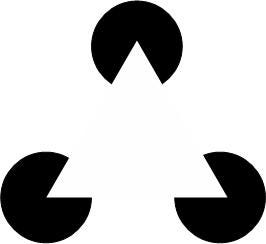Gestalt and Design: The Underlying Concepts
I just recently signed up for the Interaction Design Foundation to take some of its design courses. Lately, my focus has been on Gestalt Psychology which is an especially important topic as it is one of the fundamentals of design. My next few articles will be a series discussing this topic.
Gestalt Psychology is based on the theory that in terms of human perception, the whole is different than the sum of its parts. In other words, we see a visual in its entirety rather than its individual parts. Gestalt psychology is made up of four underlying parts-emergence, reification, multistability, and invariance.
Emergence

When looking at the black and white image above, one may at first see various, ambiguous black shapes randomly organized. Or they may immediately see a picture of a dog sniffing a tree. Upon recognition, rather than seeing individual parts such as the tail, head, or legs, the dog pops out as a whole. The perceptual phenomenon in which an entire image appears from a scene is known as emergence. This is a central element to gestalt theory, being that we see the entirety of objects in the world automatically and unconsciously rather than individual parts.
Reification

Looking at the image above, it appears to be a white triangle covering three black circles. However, upon further inspection, one can see that the image consists of three black circles, each missing a sector. Reification is the perceptual ability in which an abstract object is seen as something concrete. When visual information is missing, the brain attempts to construct its entirety in order to make sense of something otherwise confusing.
Multistability

When looking at the image, depending on what color is the background, one either sees the silhouettes of two faces staring at eachother or a vase. But upon focusing on the opposite color as the background, the image switches. Multistability is the perceptual phenomenon in which visual information can be seen in multiple different ways when focus is shifted. Both views are not visible at the same time.
Invariance

Above, one can see that each image shows the same shapes regardless of :
a. Rotation/Orientation
b. Translation
c. Perspective and elastic deformities
d. Graphic element and lighting
Invariance is the perceptual phenomenon in which one unconsciously recognizes visual elements despite a change in conditions. It is essential to interacting with the environment as without this ability, one would require a great amount of cognitive effort to constantly assess the ever changing world.
Sources:
- https://www.interaction-design.org/courses/gestalt-psychology-and-web-design-the-ultimate-guide
- https://www.smashingmagazine.com/2014/03/design-principles-visual-perception-and-the-principles-of-gestalt/
Check out the other articles in the Gestalt and Design series
